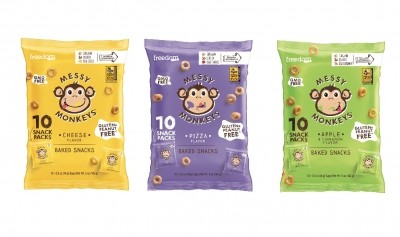Toddlers fall short on daily veggies while infants aren’t getting enough iron, Nestlé study finds

The nutrition shortfall is prevalent among infants as well, nearly one in five 6- to 12-month-olds are not getting enough iron, a critical nutrient for brain development, a number that has more than doubled since 2002 from 7.5% to 18% in 2016.
These findings are particularly concerning because of the critical window in a child’s early life when healthy nutrition patterns are established, said Ryan Carvalho, MD, medical director at Gerber Products.
“The findings in the FITS study were very revealing, particularly because it’s the largest nationally-represented study of what US infants, toddlers, and preschoolers are eating,” Dr Carvalho told FoodNavigator-USA.
Nearly 10,000 parents and caregivers of infants, toddlers and preschoolers have been surveyed over three FITS studies taking place since 2002. A team of pediatric experts and nutrition scientists from academic, medical, government and research institutions collaborated with Nestlé and Gerber on the most recent FITS study. The first set of publications appear online in the Journal of Nutrition, published by the American Society for Nutrition
“We continue to see dietary patterns are set really early in life and we know that what children eat in the first few years sets the foundation for their choices later in childhood,” he said.
“When babies become toddlers those early feeding habits matter.”
Variety and type of healthy food matter
When starting a child on solid foods the prevailing advice from the pediatric community is to introduce your child to a variety of foods, but this recommendation is often too general, according to Dr Carvalho.
“What needs to be emphasized clearly, as a finding from the study, is that iron-rich foods – iron-fortified cereals, beef, beans, and leafy green vegetables – are a great way to start a baby on solid foods,” he said.
The FITS findings found that just over a half of young children are eating an iron-fortified infant cereal (an all-time low), just about 5% are eating iron-rich meats such as beef, and 3% of 6- to 12-months-old received an iron supplement.
Persistence on the parent or caregiver’s part also plays a large role in influencing and molding children’s dietary patterns, according to Dr Carvalho.
One of the biggest obstacles for parents and caregivers when introducing new healthy foods is resistance from the child and the temptation to give into less nutritious options like chicken nuggets, pizza, and French fries.
“A child may not like every food that they’re given,” Carvalho said. “I think the important lesson here is to persevere, and it may take a child up to eight to nine times of persisting with a particular vegetable to actually get them to take it and hopefully actually enjoy it.”
Mixed dishes like pasta containing vegetables become more common as children get older, the study found, and can serve as a good source of vegetables, whole grains, lean meats and other protein foods, low-fat dairy, and healthy fats.
Opportunities to improve childhood nutrition
The FITS findings come at a pivotal point to inform food policy discussions including the development of the Dietary Guidelines for 2020-2025 and the reconsideration of the benefits offered in the USDA’s WIC (Women, Infants, and Children) food package, which was last revised in 2009.
“One of the best things about the Feeding Infants and Toddlers Study, is the timing of these findings and the results that they show us. Because for the first time ever we will be having dietary guidelines for infants and toddlers should it be 24 dietary guidelines that should hopefully come out in 2020,”he said.
For Gerber, the study findings impact the product development in terms of nutrition and fortification, according to Dr Carvalho.
“All I can say is to encourage the industry to embrace these findings from the latest FITS to inform everything they do to help nourish the next generation of children.”


















